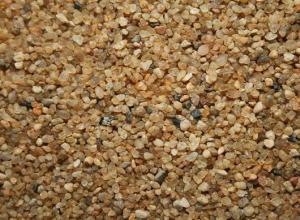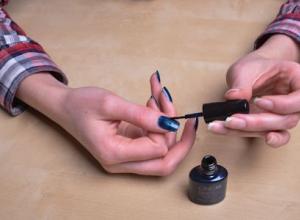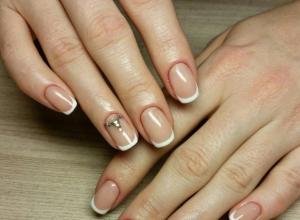How to assemble from modules. Manufacturing of triangular modules
How to make a triangular module (diagram)
How to make a paper module (video)
What can be done from modules
Modular origami is a special manufacturing technique various volumetric figures from paper triangular modules. It was invented in China.
To make, for example, a swan, a snake or a Christmas tree using this technique, you need to prepare many paper triangular modules and then connect them to get the desired shape.

Triangular-shaped origami modules and how they are made from rectangular pieces of paper. These rectangles can be of different sizes, for example 53x74mm or 37x53mm. To get the right size, you need an A4 sheet.
Prepare A4 paper (standard paper from a sketchbook, or paper for printing or copying).

1. Fold the paper in half, then again and again - if you unfold the paper, you will have 16 divisions.
* You can fold the paper one more time, then there will be 32 divisions, and they will be smaller.
2. Cut the paper into 16 or 32 rectangles.
* You can use either scissors or a stationery knife for this; the latter will be faster.
3. Fold one of the resulting rectangles in half in width.

4. Now fold it in half lengthwise and return to its original position (return to step 3). In the middle you now have a line with which you can fold the module evenly.

5. First fold one side of the rectangle towards the middle, then the other (similar to folding an airplane).

6. Now fold the edges of the pieces that protrude.

7. You need to bend the protruding sections upward.

8. Bend your structure in half (connect the 2 sides of the module).


You need to make as many such modules as needed to assemble the desired structure.
How to make a triangular module (diagram)

How to make a paper module (video)
Modular origami. How to make a module.
The main thing you need to have for modular origami is paper and a lot of patience. Due to the fact that the figures in modular origami are not very small, you need to prepare many modules for them, from several hundred to several thousand.
Each module has 2 pockets. With their help you can connect modules.
Typically, when folding modules, no glue is used, since the friction force prevents them from falling apart. But it happens that in some places the paper structure is not stable, then it is strengthened by gluing several modules PVA glue.
Can be used both pure white and colored paper. Office paper will do, but you can also use pages from magazines and even candy wrappers. Regular colored paper is quite thin and tears at the folds. It can be used to create small modules (if you divide A4 paper into 32 parts).
To connect modules, simply insert them into each other. This can be done in several ways.
For example, like this:

What can be done from modules
And if you take up this type of art with passion, you will very soon be able to make, for example, the following models:




Triangular module
This module is used in most crafts modular origami
The A4 sheet is divided into equal rectangles, and choose the size yourself. The more rectangles, the smaller the module. I make modules based on this ratio.


1. Bend the rectangle in half lengthwise.
2. Bend it across, find the middle, and straighten it. Place at a bent corner
3.Fold the edges towards the middle.
4. Turn the product over
5.Fold the protruding edges up.
6. Place the corners behind the triangle.
7.Fold the bottom
8.Follow the resulting lines, lay the corners and lift
Bottom up
9. bend the module in half
10.triangular module is ready
assembly video
————————————————————————————————————————- Here is another origami module made of paper, although a running one first. The process of sheet alignment

The rectangles are narrower and fit almost the same way, but there are slight differences in module assembly.
———————————————————————————————————— for tangram models.
Tangram models are usually assembled from modules folded into a triangle, the so-called basic modules. The second type of modules - additional - due to their narrow long shape, is used to create leaves, heads and necks. The basis of both types of modules is a square. Folding the modules is a fairly simple process.
Origami modular assembly diagram:

Basic module from a square.
Let's start making paper origami -
module.
1.First, place a sheet of paper on the table with one corner facing you. Then bend it diagonally upward to form a triangle. The long side is at the bottom.
2.In the second stage, attach the right corner to the upper, middle corner and make a fold.
3. Now the left corner is next. It also needs to be attached to the top corner. Now you have a square in front of you.
4. Turn the square over so that all corners remain up.
5. Bend the top sheet of the square down and make a fold.
6.Then fold the right square down.
7. Do the same with the left corner: bend it from top to bottom. If you did everything correctly, you will get another triangle.
8.Finally, fold the right half of the triangle to the left.
9.Basic module is ready for assembly modular origami from paper.
10.This is what the base module looks like from the side. Two slots for inserting other modules are clearly visible. From this perspective module stands on its long side, the double end (goal) points back.
——————————————————————————————
Additional module.

- First, place the square with one facing you. Then fold it diagonally and open it again. Now you see a vertical fold.
- Fold the right side towards the center fold so that the narrow corner is at the top.
- Then fold the left side in the direction as shown in the picture. A narrow corner is formed from below.
- 5.Fold the right and left sides towards the middle again to create a diamond shape.
6. Fold both sides of the diamond together along the middle crease
7. Finally, fold the triangle again - up - and the additional module is ready.
This is how the modules are assembled.
There are no similar articles.
Decor, DIY
Regina Lipnyagova

Photo © Regina Lipnyagova
Modular origami is incredibly popular today. Beautiful three-dimensional figures from triangular paper origami modules look luxurious. This type of needlework is also called 3D origami; it is believed that this art originated in China. Another name for it is Chinese modular origami. You can make almost anything from small triangular modules. Once you understand the intricacies, you can make origami vases from modules, an origami swan from modules, an origami Easter egg from modules, origami flowers from modules, an origami peacock from modules, a modular origami dragon and much more.
In this instruction we will show you the basics - how to properly make an origami module. The scheme is quite simple, the main thing is to strive to make all the pieces of paper as identical as possible.
We will need:
- scissors
Materials:
- paper
Step-by-step instructions on how to make an origami module:

To make an origami module, we need paper and scissors.

Cut the sheet into 16 equal parts. You need to try to do this as carefully as possible, all parts must be the same. Some people prefer to fold a sheet of paper in half and cut it until they get a piece of paper of the required size, while others use a ruler to mark the sheet and cut several sheets together at once.

Fold the paper in half lengthwise.

Fold it in half crosswise.

After making the fold, unfold the rectangle back.

We bend the right side to the fold line at a right angle.

We bend the left side in the same way.

We turn the module over.

Fold the base of the triangle up.

Turn the workpiece over.

We cut off the remaining ends with scissors.

We bend the workpiece in half. It turns out that making an origami module is very simple. He's ready!

To connect the modules to each other, you need to put the module on the tips of two elements.
Leave your opinion about the article:
Modular origami is a very exciting activity that gives a lot of scope for creativity to everyone who has mastered the simple technique of making paper modules.

You can use special paper sheets designed for making origami, but their cost is usually quite high, so at least at the learning stage it is better to use regular high-density printer paper - from 80 g/m3 and higher (for example, Spectra Color).
Take a sheet of A4 format. Depending on the size of the modules, the paper sheet will need to be divided into 16 or 32 fragments. If we need 16 parts, fold the sheet horizontally twice, if 32 - three times. In the picture below, we folded the blank three times, if you need 16 blanks, then do not do the last fold.
Now we unfold the sheet and fold it in half vertically (the fold should remain on the left side). Then we bend it in half horizontally 2 times. Expand the sheet. On it we will see the fold lines along which we have to cut blanks for the modules.
The sheet to be divided into 16 parts looks like this.
And this is what a sheet looks like, which will be divided into 32 parts.
Cut the sheet along the fold lines. From each small rectangle we have to make an origami module, the assembly diagram of which is presented below. For beginners, it is better to start assembling modules from a 1/16 sheet of paper. Modules made from 1/32 are more miniature and elegant, but the process of assembling them requires some skill.

1- take a small rectangle;
3- now fold it in half vertically;
5- bend the “wings” on both sides;
7- bend the corners;
9- bend the module, it takes the shape of a triangle.
11, 12 - fastening modules to each other using pockets.
Using modules as parts of a construction set, you can use them to create the most bizarre three-dimensional figures that your imagination can suggest.

Necessary materials:
Origami modules - step-by-step instructions


By threading the corners of some modules into the pockets of others, we can create voluminous paper crafts of any shape and size.
Perhaps the most difficult thing in modular origami- do it base for volumetric 3D models. It is necessary for assembling animals, vases, and fairy-tale characters. The base allows the craft to gain stability and strength. But often the first rows of which it consists easily fall apart, and it is even recommended to glue them together.
I'll tell you a secret - you can do without glue if you follow certain rules. But first things first.
Modular origami - method of assembling the base
At the base, triangular modules (see here how to make them) are inserted on different sides. Due to this, two rows are obtained. One of them goes inside the craft and is not visible.
To make it clear to you, I will take modules of two colors - green and red.
In any diagram, rows 1 and 2 are the base rows that come together. To prevent them from falling apart during creation, I recommend making the 3rd row right away. That is, you assemble three rows at once, guided by the number of modules and their color scheme in the chosen scheme.




It looks like this:
- Take 2 triangles of the desired color (mine are green). Place them in front of you with the long ends facing you. Let the sides touch.
- Place the red module on them. Its long ends point upward. It has two pockets where you insert the touching ends of the green ones.
- Place another green triangle on the side and put the red one on again, inserting the ends into the pockets.
- Fasten the red ones together by placing another module on top of the two outer ends. See photo.
- Continue assembling by attaching the green parts to the sides and securing them with two rows of red ones. Assemble the required number of modules at the base and close it into a circle.
- Turn the workpiece over so that the red parts are facing out with the short ends. Press the green center inward.
- Turn the base over and make sure the row of green triangles is on the bottom.
- Continue assembling according to the chosen pattern where the red modules are, inserting parts in a circle.






We have made a solid foundation - this is a basic skill. It will come in handy if you are seriously interested in modular origami.

I wish you success in your creativity! There are many beautiful models on the site that use a base. Try putting together something simple if you're just starting out, like , or .
Modular origami is one of the varieties of origami, which is the assembly of figures from identical parts, which are called modules. Parts in this technique, as a rule, are not glued, but simply inserted into each other. Origami is perfect for both adults and children; it develops attention and fine motor skills. In order to make figures, you can use numerous patterns. Of course, if you are just starting to master modular origami, the diagrams will be a great help. In any case, it won't be that difficult to figure out.
How to make blanks?
Before you start assembling modular origami figures, such popular ones as, for example, a vase or a swan, you need to learn how to make the modules themselves.
In order to make modules you will need paper. Several options can be used:
- So-called note paper (the sticky edge will need to be cut off);
- White or colored A4 paper;
- Ready-made kits for modular origami (as a rule, they already contain cut paper of the required size and colors).
If you use A4 format, you will have to cut it.
Modules can be cut in 2 ways:
- 1/16 equal parts;
- 1/32 equal parts.

How to assemble a module?
First you need to fold the sheet in half, then determine the fold line and bend the corners to the center.

The free ends must be folded up on both sides.

Now fold the corners down.


Now all that remains is to fold the workpiece in half and the module is ready for use.

How are the modules attached and what can be done to prevent the work from falling apart?
To attach modules to each other, you can use one of three existing methods:
Modules on long sides
This fastening method is often used in modular origami snakes, since the parts are attached one after another.

Modules on short sides
Used for fastening small parts.

Two modules on the long sides, one on the short side
As a rule, such fastening of modules is used when flowers are made, since they have several tiers.

Of course, the mounting of modules is used differently for each figure; it is usually indicated on the diagram, so you can’t go wrong.
In general, modular origami does not involve the use of glue. The parts are simply inserted into each other and are held together due to this. But sometimes, especially when the figure is voluminous, it is simply necessary to additionally secure the modules. Regular office glue is best suited for this.
Modular origami for beginners: read the diagram
Modular origami for children is a fairly simple activity, especially if you know all the signs indicating a particular action in the origami assembly. The designations in the diagrams are not difficult to remember, since there are only three of them: arrows, signs and lines.
- Lines - indicate direction. There are from oneself and on oneself.
- Arrows indicate where the sheet is folded.
- Signs are designations that indicate a specific action that needs to be performed. For example, bend a sheet of paper.
Depending on the method of connecting modules you will get a different surface pattern. You can make increases and decreases, changing the shape of the three-dimensional figure.
Starting row
1. Take an even number of modules, for example, 18 pcs.
2. There are pockets on the outer sides of the module, and the ends of the module are equilateral right triangles. One side and the hypotenuse of the triangle are free. Take three modules and insert the triangles of one into the pockets of the other two, as shown in the photo.


3. Take two more modules and insert the triangle of the first into the right pocket of the previous module, and the left triangle into the left pocket of the second module.

4. Continue assembly until all modules are connected. You now have a chain of two rows of modules, or the initial row.

Advice
When assembling the initial row, always arrange the modules so that their free sides lie parallel to each other.
5. If the initial row is open, add one module at the end of the chain. On such initial rows, open bases of the figures are made.

6. If the initial row is closed, that is, has the shape of a ring, insert the free triangle of the outermost module into the pocket of the first module of the chain. On such initial rows, closed bases of the figures are made.

Continuation of dialing
1. Hang the third row: insert the triangles of adjacent modules of the initial row into the pockets of the first module of the third row.

2. Pay attention to the pattern that the modules form on different sides: where the hypotenuses are visible, loops are formed, and where the sides are, broaches are formed.

3. Continue the row until you have inserted triangles into the pockets of all modules of the third row.

Advice
If the base of the figure is not closed, you can put an additional module on the outer triangles of the initial row. This depends on how you close the edge of the open figure.
Increases
1. To increase the number of modules in a row, perform the initial row and another 2-3 rows of the set.

2. Insert the triangles of two adjacent modules into the pockets of two additional modules so that the free triangles of the additional modules are in the middle.

3. Also make an increase along the entire row, guided by the product diagram.

Advice
Increments can be made not only on two adjacent triangles, but also on one. In this case, place the free triangles of additional modules on one side of the modules of the previous row.
Decreases
1. To reduce the number of modules in a row, insert not one, but two triangles of modules from the previous row into the pocket of the module of the new row.

2. As with increases, arrange the modules of the new row symmetrically.
Advice
It makes sense to make reductions along the edges of the open base of the figure, giving them the desired shape. In this case, place the free triangles symmetrically to the center of the figure.
Closing the edge
1. Along the edge of the open base of the figure there are often free triangles of the modules of the lower rows. In order for the edge of an open figure to be smooth, it must be closed.
2. Insert the triangle of the outer module of the previous row and the free triangle of the row in front of the previous one into the pocket of the module of the new row.

3. Complete the row to the end, connecting the outer modules as at the beginning of the row.
4. Complete another cast-on row.
5. Start a new row, as in step 2, and continue set 2, connecting the outer modules, as in step 3.
Advice
If you increase and decrease at the same time as closing the edge, you can get different shapes for the base of the figures, for example, a triangle or a heart.
Inflection row
1. Complete the initial row and a few more rows according to the diagram.
2. Hang a new row, placing the modules in reverse, that is, on the side where the sides of the triangles were, the hypotenuses should be. On the outside of the figure you will see a row of broaches between the rows of loops.
Of the many types of paper crafts, origami is the most popular. Creating paper figures by folding a sheet of paper gives unlimited scope for imagination and creativity. In addition to the classic one, modular origami has recently become widespread.
The peculiarity of modular origami is that paper figures are assembled from individual modules. There are certain rules for folding them. By inserting modules into one another, real works of art are created. Modular origami captivates with its unusualness, the ability to create various works - from the simplest to entire artistic compositions.
Since modular origami is, first of all, a technique of assembling from modules, the most important thing for work is:
- A4 size paper.
You can pre-cut blanks from sheets of paper to create modules. The sheet is divided into 16 or 32 parts - these are the standard sizes of the modules. For large figures, the sheet is cut into 4 or 2 parts.
- Scissors, ruler, PVA glue.
- Model assembly diagrams.
In stores you can find ready-made modular origami kits for beginners with step-by-step instructions for assembly rules. Also, lessons in special master classes will help a beginner or a child learn how to make modular origami out of colored paper. In such classes, using diagrams, we learn how to make step by step, for example, animal figures or a Christmas tree.

Assembling modules
A triangular module is used for work.
Experienced craftsmen make many paper elements of different colors in advance. It turns out to be a kind of modular construction set with which you can make an original craft. The advantage of this technique is that the modules are used more than once: a boring figurine can be disassembled and a new original craft can be created.
The finished triangular module should have two pockets and two corners that allow you to connect paper elements. To make a triangular module, prepare rectangular pieces of paper.

The rectangle is folded in half lengthwise, and the resulting part is folded in half across. This creates two main folds to create the module.
The edges bend towards the middle, the figure turns over.
The bottom edge rises. The corners are folded over a large triangle.
The resulting lower part is unbent. Small triangles from below are folded along the formed lines, the edges are raised.
Bend the resulting triangle in half.

It is these modules that help create voluminous, beautiful works. Any craft in this type of origami begins with the production of a large number of modules. To create durable figures, you need to correctly connect the parts of the craft.
Each diagram usually indicates on which side the finished elements are connected.
There are 3 generally accepted schemes for connecting parts in modular origami:
- You can connect 2 parts on the long side and add 1 on the short side.
- Connection only on the long side.
- The elements are connected only with short sides.
Models for beginners
Having learned how to create modules, a novice craftsman can begin creating a paper figurine. The simplest modular origami for beginners is made from 20 modules.
For a cute chicken you will need 4 red and 16 yellow parts. After assembling the figure, glue the beak and eyes.
Among the large number of multi-colored works, modular origami made of white paper stands out. White paper is a rather complex material for crafts: it does not forgive negligence and sloppiness, all flaws and errors on a snow-white sheet are immediately noticeable.
Crafts made from white sheets play on the contrast of light and shadow. More experienced craftsmen generally experiment with such products. From white paper you can create not only a snowflake or a bunny, but also more serious works: the beauty of a dazzling white vase does not need additional bright colors.
If you wish, you can find modular origami diagrams for beginners made from white paper. Particular care should be taken when working. Any figurine assembled using modules requires a lot of time and perseverance. By introducing children to this type of creativity, fidgets develop attentiveness, concentration, and scrupulousness. By making blanks for their works (paper modules), children develop fine motor skills.
Watermelon
When looking for modular origami designs for beginners, you can find a large selection of crafts - from an Easter egg to a magnificent red Chinese dragon. Crafts such as a vase and a paper watermelon are easy to make and look bright.

To create a piece of watermelon you need to make 193 triangular parts:
- 114 red;
- 45 green;
- 17 white;
- 17 black.
The first three rows are assembled from green elements: 14, 13 and 14 again.
The fourth row will take 15 modules: 1 green, 13 white and 1 green module completes the row.
Fifth row: 1 green, 1 white, 13 red, again 1 white and 1 green.
From the sixth row, the watermelon parts are reduced one at a time on each side. Black elements alternate with red modules. Only 20 parts are assembled in height.
Hare
It will be interesting for children to make a cute hare together with their mother.
The bunny requires 522 triangular pieces. You can make everything out of white paper, then you will get a white snow hare. If desired, you can make a multi-colored blouse for the bunny. Then, when making the elements, make 120 pieces in the color you want the hare’s sweater or blouse to be.
Since there are a lot of parts to prepare, get dad involved in the work. A preschooler does not yet have enough perseverance to do monotonous work for a long time. Therefore, parents will have to take on the main work of manufacturing parts.

We make the basis for the craft. The corners of 2 parts are inserted into the pockets of the third module. Then 2 more parts are added in the same way. The last element closes the structure into a ring.
Assemble three rows of the bunny's body. Each row has 24 parts, which are fixed in a checkerboard pattern.
Carefully, trying not to fall apart the assembled workpiece, turn the circle out so that it becomes shaped like a cup. Then attach 24 colored parts to the body of the craft. The colored elements should protrude slightly above the white body. When you finish a color row, align it.
A sweater is formed from 4 color rows. Attach white head pieces to the top row of the sweater. The parts are attached outward with the short side.
The head is made alternately from 24 and 30 parts. The last row is reduced to the center, the head becomes like a ball.
Form the ears. Alternate rows of 5 and 6 elements. Last, 9th row - 4 parts.
All work using this technique is based on creating volume using paper blanks. There are some crafts, for example, a swan, which, having mastered, you can quite easily make a vase, a peacock or a three-headed dragon.
Swan
The main part of the modular swan resembles a bowl. The ability to create a swan will make the process of assembling other models easier and faster.
To create a handsome swan you will need 1502 elements. Such a craft can be an original gift in itself or decorate the interior of an apartment. It is better to start creating such a masterpiece after reading the instructions for assembling such figures.

Penguin
One of the simple figures that your child will like is a penguin.
The first row, which is the base, is made of parts closed in a circle. The figurine itself is made in the shape of a cylinder.
For the model you need: purple or black parts (126 pieces), for the nose and paws 5 red elements, white blanks you will need 40 pieces.
The more experience the master has, the more individual works he creates. Experienced craftsmen are no longer looking for ready-made schemes; they come up with and realize their creative fantasies.
To captivate your baby with this type of needlework, offer to collect crafts that are not difficult for your baby. Help your child with the most difficult moment for him - making modules. There are quite a lot of diagrams for kids that explain step by step how to make, for example, a rose or a colorful fish.
Choose easy crafts for activities with your child that won’t take much time to make. If creating a figurine takes a lot of time, then divide the work into several parts. Keep in mind that it is difficult for a preschooler to sit in one place for more than 20 - 25 minutes.
To make it easier for your baby, do not make small modules. Let you make 16 blanks from an A4 sheet, not 32. It is more convenient for a preschooler to work with larger parts.
Children also enjoy collecting animal figurines. There are easy diagrams for assembling a cat and a horse. Mom and her baby can try to assemble a dragonfly or spider using a ready-made pattern. To prevent the craft from falling apart when touched, you can secure it with glue, then it will delight everyone around you for a long time.
Conclusion
Getting to know modular origami for beginners and the joint creativity of mother and child will only bring the family closer and improve the atmosphere in the house.
For a preschooler, parents are the main authorities in life, who, by their example, should teach the child to finish things and not despair because of temporary setbacks.
Karina is a regular expert on the PupsFull portal. She writes articles about games, pregnancy, parenting and learning, child care and the health of mother and child.
Articles written
Latest site materials
Horoscope

What is an ornamental stone? Ornamental mineral formations
If you look around carefully, almost all the objects that surround us are made of stones and minerals. Or these components are part of the components from which this or that material is made. The house is built of concrete, which is
Experience

Difference between gel polish and shellac
Currently, manicure materials such as gel polish and shellac are very popular in the nail industry. They really simplify the task for the master and in the end the result pleases the client’s eye. Gel polishes from each manufacturer have a wide range of colors
Cosmetology

Plague doctor tattoo The meaning of tattoos for girls
The meaning of the Plague Doctor tattoo - photo examples of ready-made tattoo designs Interesting, meaning and meaning of the “Plague Doctor” tattoo Today, more and more often you can find tattoos with a mystical meaning on the bodies of young people and girls, which is what they represent
Cooking

Beautiful and fashionable French manicure – the best photo ideas for French manicure
Fashion trends, new products, trends - every season they come up with something interesting. It is not always possible to keep up with innovations, and this is not necessary. The established classic remains in fashion. In manicure it is a white French manicure. It's difficult to find something more perfect. Neat
Horoscope

Documents for registration and receipt of monthly child benefits
Being a single mother is a Herculean task. A woman carries a baby alone, gives birth, and then raises it. Unfortunately, she has no one to expect moral support from, but she can receive financial assistance from the state. How much do single mothers earn?
Cosmetology

We reveal the secrets of how to avoid chapping of the skin
Every woman wants to always look fresh and impeccable. This is not always possible for many reasons. One of the main harmful factors for skin health is external influences. What to do if the skin becomes chapped and begins to peel? Profile methods